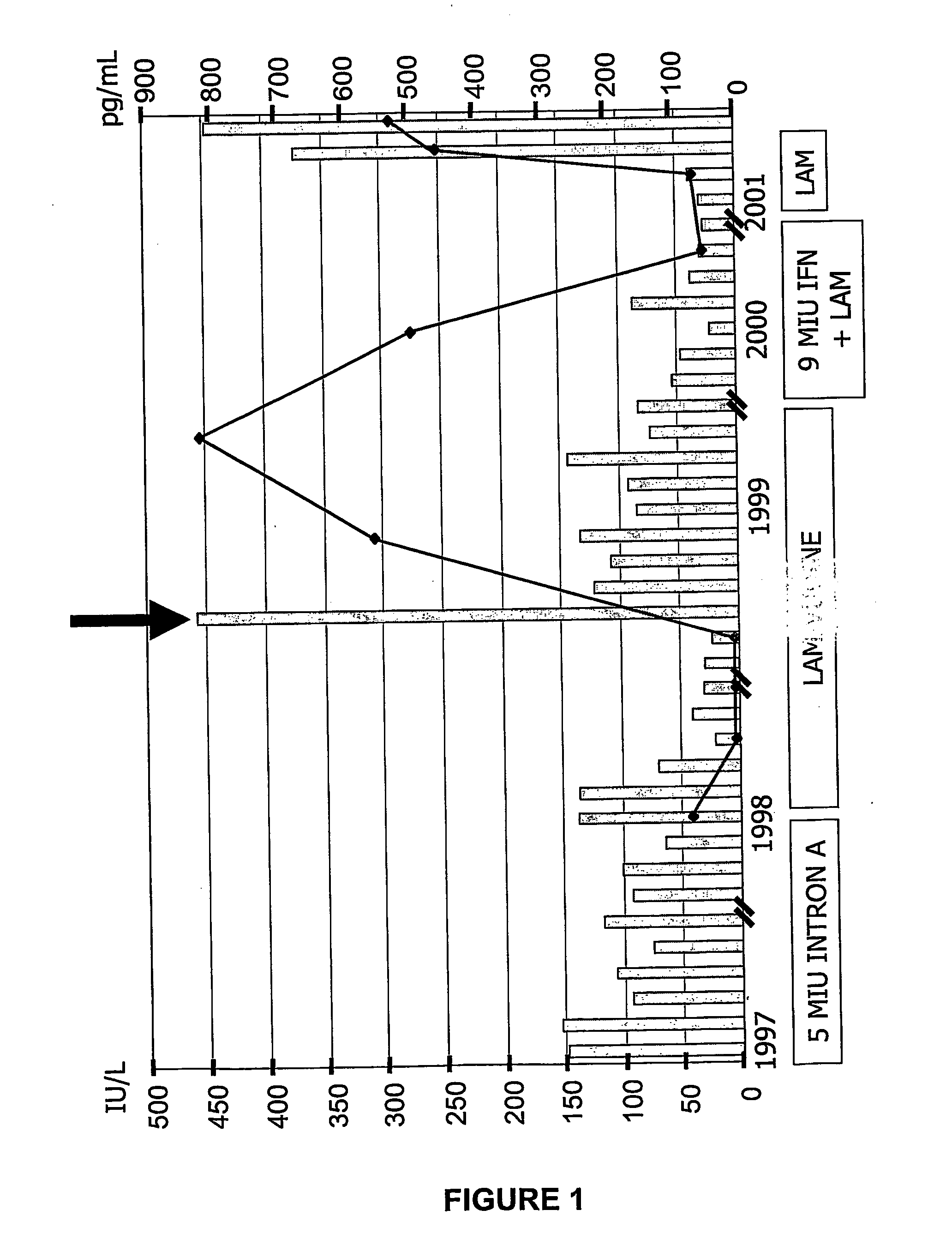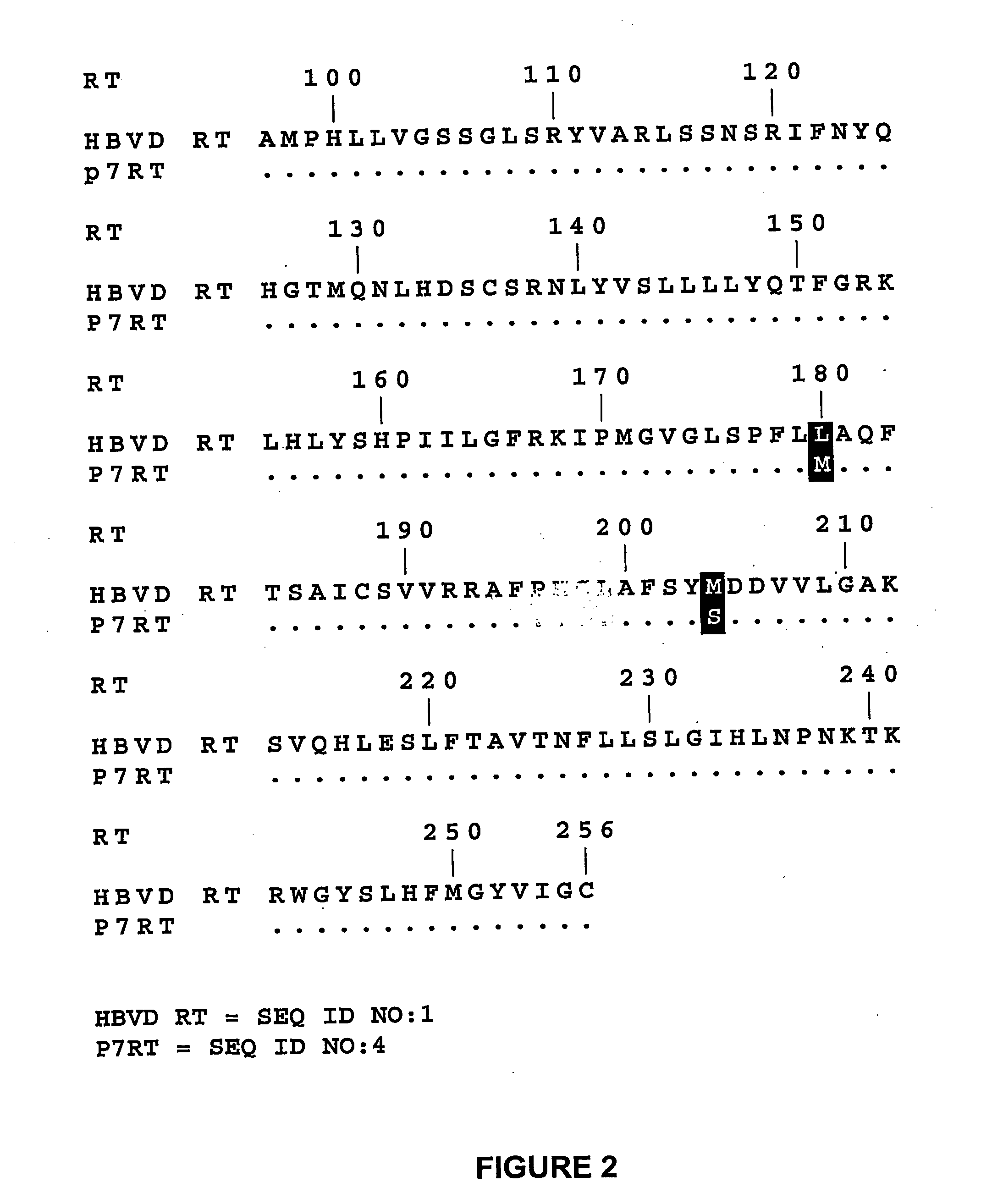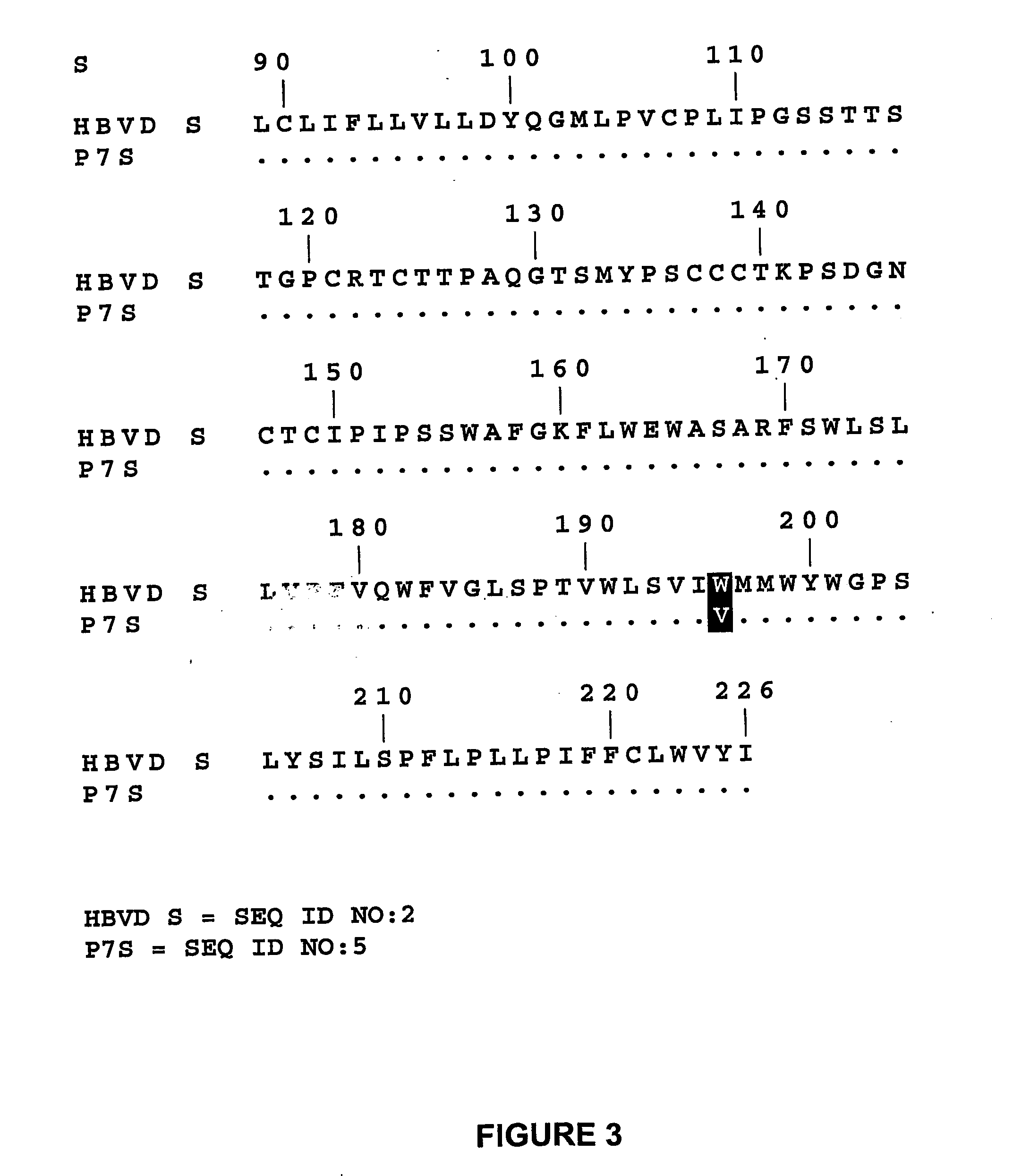HBV drug resistance drug resistance detection methods
a drug resistance and detection method technology, applied in the field of hbv drug resistance, can solve problems such as the emergence of variant viruses or “escape” mutants
- Summary
- Abstract
- Description
- Claims
- Application Information
AI Technical Summary
Benefits of technology
Problems solved by technology
Method used
Image
Examples
example 1
Hepatitis Serology and HBV DNA Assay
[0205] HBsAg, anti-HBs, HBeAg, anti-HBe, and anti-HCV were determined by the microparticle enzyme-immunoassay (MEIA) method (Abbott Laboratories, North Chicago, Ill., US). Anti-HDV enzyme-immunoassay method was performed as per the methodology supplied by the manufacturer (Abbott Laboratories, North Chicago, Ill., US). Serum levels of HBsAg were determined by a modified Laurell electrophoresis system (Gerlich et al., 1975). HBV-DNA levels were tested by using a commercial liquid-hybridization assay (Digene, Maryland, US), with the lower limit of detection of this assay 5 pg / mL of viral DNA.
example 2
History of the Patient
[0206] The patient was a 56-year-old Caucasian male with known HBV infection since 1990, diagnosed during a routine check-up. A liver biopsy in 1996 revealed chronic active hepatitis (CAH) with a histological activity index (HAI) of 8 according to Knodell et al. (Knodell et al., 1981). He was HBeAg negative, anti-HBe positive and as well as positive for HBV DNA by PCR. IFN therapy, 5 MU / TIW (5 million units / three times in one week), was initiated in March 1997. The patient did not show an ALT (alanine amino-transferase) decrease or virological response (HBV DNA level was 74 pg / mL at the end of IFN treatment). After 8 months of treatment, the patient discontinued IFN therapy and began taking lamivudine, 150 mg / day. During lamivudine treatment, there was normalization of ALT and replication inhibition of HBV. At month 18 of lamivudine treatment, however, clinical breakthrough occurred, characterized by an ALT flare and detection of HBV DNA by a hybridization ass...
example 3
Extraction of HBV-DNA
[0209] HBV DNA was extracted from 150 μL serum which was incubated mixed with 300 μL lysis buffer (20 mM Tris HCl, pH 8.0, 10 mM EDTA, 0.1% SDS) and 50 μL proteinase K (at 10 mg proteinase K / mL). The mixture was incubated at 60° C. for 4 hr. Incubation was followed by extraction with 400 μL phenol / chloroform. The DNA-containing phase was subsequently s extracted with 400 μL chloroform / isoamylalcohol (24 / 1). DNA was precipitated overnight at −20° C. or −80° C. after adding 500μL ethanol (96% ethanol containing 0.3 M NaCI) and 10 μL tRNA (at 1 mg tRNA / mL). The DNA was subsequently collected by centrifugation. The pelleted DNA was washed with 1 mL 75% ethanol. Finally, the DNA was resuspended in 20 μL distilled water (DNAse- and RNAse-free).
PUM
 Login to View More
Login to View More Abstract
Description
Claims
Application Information
 Login to View More
Login to View More - R&D
- Intellectual Property
- Life Sciences
- Materials
- Tech Scout
- Unparalleled Data Quality
- Higher Quality Content
- 60% Fewer Hallucinations
Browse by: Latest US Patents, China's latest patents, Technical Efficacy Thesaurus, Application Domain, Technology Topic, Popular Technical Reports.
© 2025 PatSnap. All rights reserved.Legal|Privacy policy|Modern Slavery Act Transparency Statement|Sitemap|About US| Contact US: help@patsnap.com



